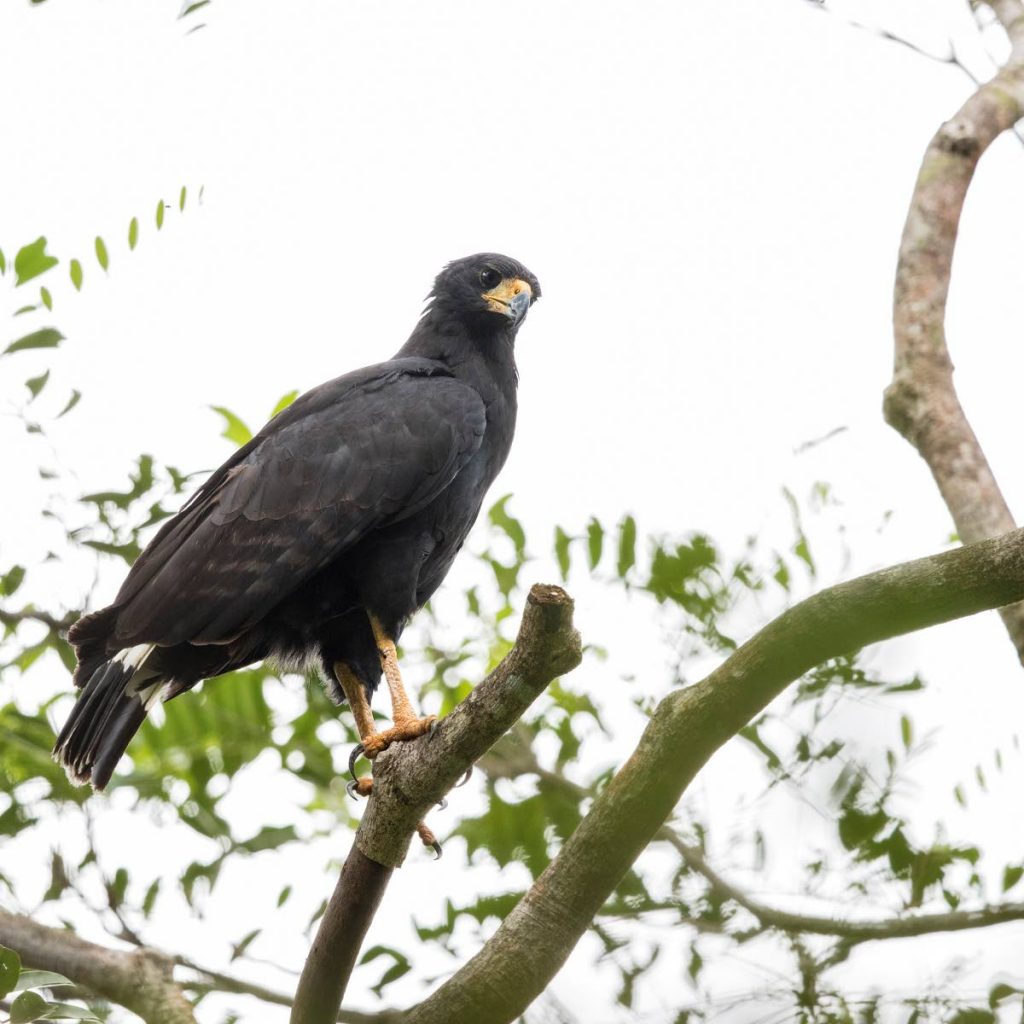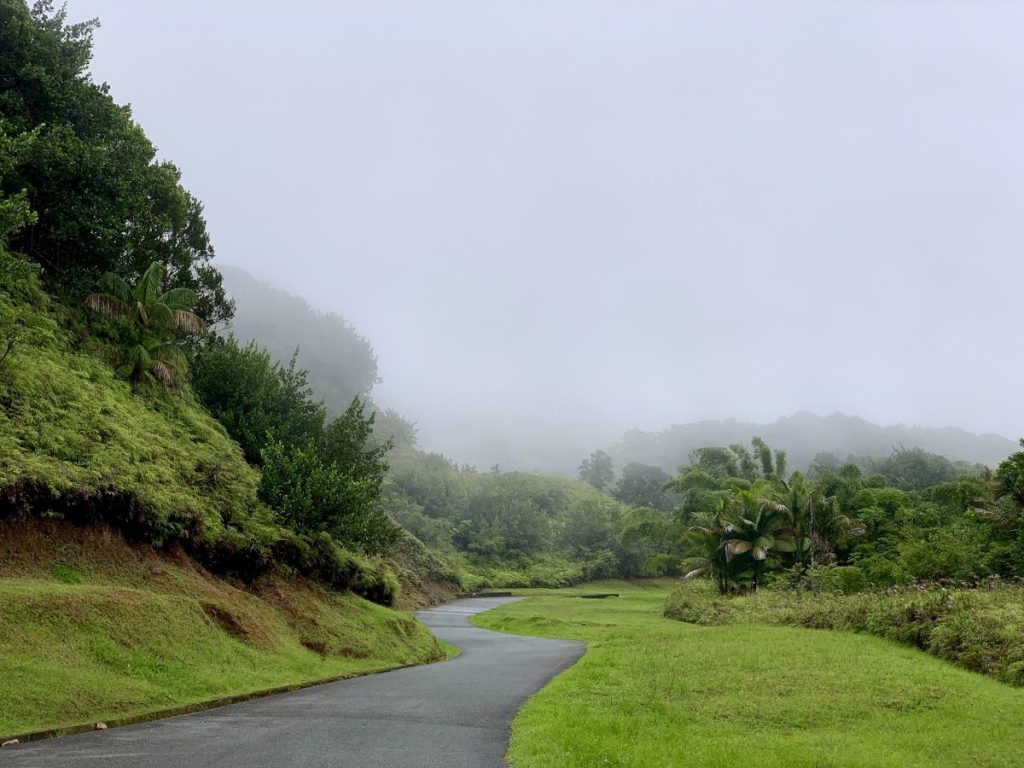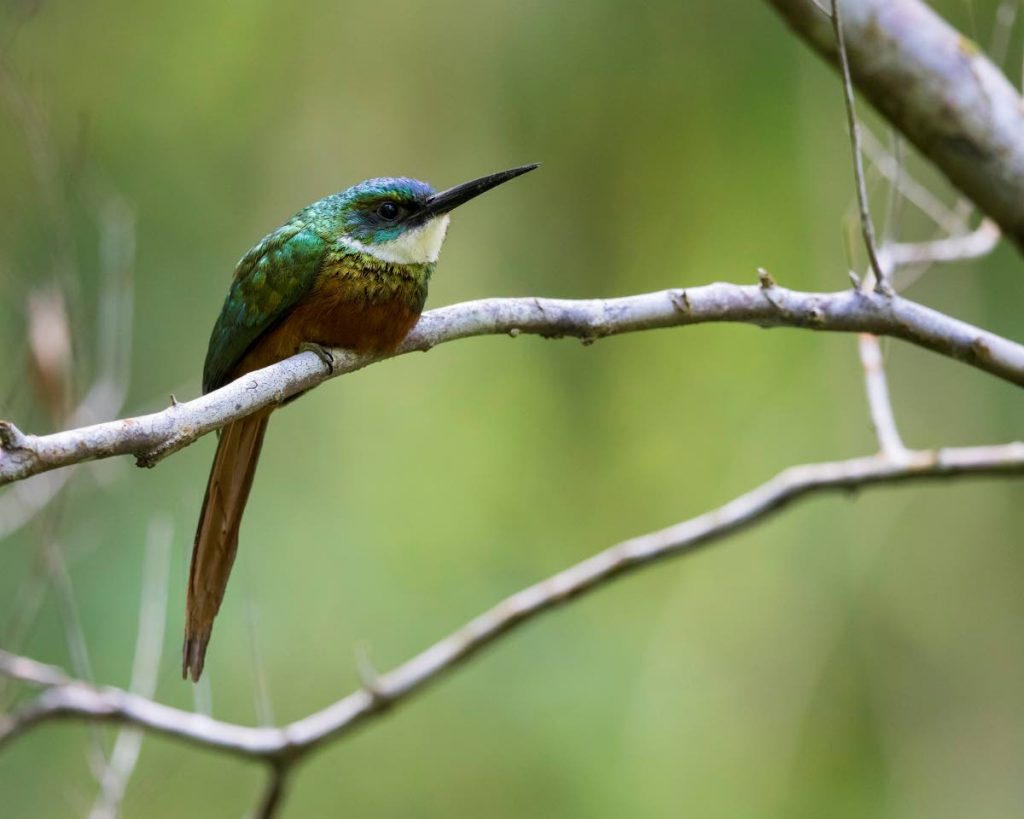Birding in the Tobago rainforest

Rain might be the main attraction of the Main Ridge Forest Reserve but the well-watered rainforest also supports a multitude of Tobago’s birds. Travel with Faraaz Abdool to see a few of these birds.
Dawn was just breaking at Roxborough as we turned away from the pounding surf and into a lush, verdant landscape. We had been driving for close to an hour in the darkness of the early twilight. In retrospect, the twilight did seem a little too dark – low-lying and rain-bearing clouds shrouded the hills and blotted out the first quivering rays of light, but not enough for us to realise that we would be in for a soaking as we entered the Main Ridge Forest Reserve.
The road that snakes through this magical forest connects two radically different coastlines. We ascended into misty, clouded rainforest where any bend might lead to Papa Bois himself; the gloomy weather brought clouds that were thicker and lower. Rufous-vented Chachalacas shrieked at each other with typical "co-cri-co, co-cri-co" cries, chasing each other with raised crests across branches from tree to tree with the ease of yard fowls escaping with the last piece of corn.

Further up into the reserve, the rain seemed to hesitate a little, testing us with a sprinkle now and again. Even with limited visibility, the forest was definitely coming to life as the day broke. Tropical Kingbirds noisily proclaimed their territory from the canopy. Grey-rumped Swifts were darting around in the misty sky and the seemingly endless twitter of Bananaquits was developing its own rhythm.
Pausing sporadically along the roadway, we were able to enjoy many different species, knowing that we could sprint to our vehicles should the heavens let loose. Many pairs of Barred Antshrikes moved through the forest together, some of them with juveniles in tow, teaching the next generation the most critical survival skills – where to get food. Sharp eyes caught a lone Olivaceous Woodcreeper hunting, hopping up a massive tree trunk before gliding across to another. Obliging Trinidad Motmots decorated many of the moss-laden branches near the roadside; vividly coloured Rufous-tailed Jacamars occasionally flashed across the road.

With the menacing clouds producing nothing more than a slight drizzle, we made the decision to leave the tarmac and hike into one of the trails. It was too cool still for any chance of seeing soaring raptors. Broad-winged Hawks and Great Black Hawks tend to ride the rising currents of warm air as the earth heats up under the morning sun. But as we were preparing to head into the trail, a movement in the trees above caught our eye. Like a beacon, the yellow legs of a Great Black Hawk shone even though it was promptly encased in a thick cloud. From time to time, the clouds would part for a few seconds, causing much excitement; on one such occasion we observed Tobago’s largest bird of prey fiddling with the remnants of its last meal.
Muddy as it was, the ferns and palms of the Main Ridge provided excellent ambience along the trail and the presence of not-so-distant Blue-backed Manakins beckoned us further into the forest. As we trod further, it seemed to darken considerably. It was no trick of the imagination, before long the white noise of heavy rainfall grew louder and louder, and we were forced to retreat under the massive root system of a fallen tree, a forest giant that was likely felled during the great hurricane of 1963. Eventually, the deluge eased a bit and we left our earthen refuge, opting to return to our previous method of birding along the roadway. We hadn’t gone far before the clouds tightened their wet grip on the rainforest. Only a few bedraggled Blue-backed Manakins hung around.

A few days later, we hiked into Main Ridge under drier conditions and at a slightly lower elevation than before. The avian cast was welcoming; a Rufous-breasted Hermit zoomed past and sat in the undergrowth, ardently pumping its tail while a Fuscous Flycatcher kept its eyes open for any unfortunate passing insect. Not a flycatcher but exhibiting similar behaviour, a pair of Rufous-tailed Jacamars kindly sat still for photos in the dim light of the understory. These metallic, fly-catching birds are also called “king hummingbird” for their superficial resemblance, but are actually more closely related to woodpeckers than either hummingbirds or flycatchers.
Throughout much of our walk into the forest, the background chorus was shared between the enigmatic Bananaquit and the Scrub Greenlet. As we continued, a different call tickled our ears. White-fringed Antwrens are common throughout much of Tobago, but never sit still for too long. Their restless habits and penchant for thick vegetation can make them challenging for photographers. The more urgent though distant flurry of manakin calls provided greater encouragement for us to leave the antwrens to their own devices.

Scrambling up a steep hill slippery with fallen leaves, the calls of Blue-backed Manakins surrounded us. No longer were they giving their trademark thick, singular whistle, they were rattling and whirring in excitement. Suddenly, the source of their excitement was revealed – a female was in the mix. Female manakins are hardly ever seen, with males practising their best moves sometimes for many seasons before they are confident enough to perform in front of a willing feminine audience. Her presence here drove all the males to play their best cards, a pair darted onto a horizontal branch and leap-frogged over each other continuously for a few seconds, their powder-blue backs and scarlet caps blurring into a magical ellipse during their intense ritual.
Mesmerised, we sat in complete awe at these bizarre, dancing birds, glued to our front row seats wide-eyed and open-mouthed. Nothing could tear our attention away – until the piercing cry of a Great Black Hawk shattered our meditation. This galvanised the author into action, continuing the frantic ascent while keeping one eye in the canopy and the other on the ground. Main Ridge jaunts reward the patient and alert birder handsomely. Not one but two of these massive raptors were seen overhead. Only a drizzle jolted my memory to a few days prior, and we made quick work of our return to shelter, should the rainforest do as rainforests do.


Comments
"Birding in the Tobago rainforest"